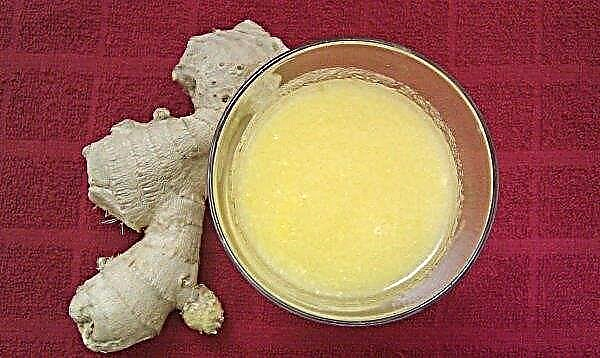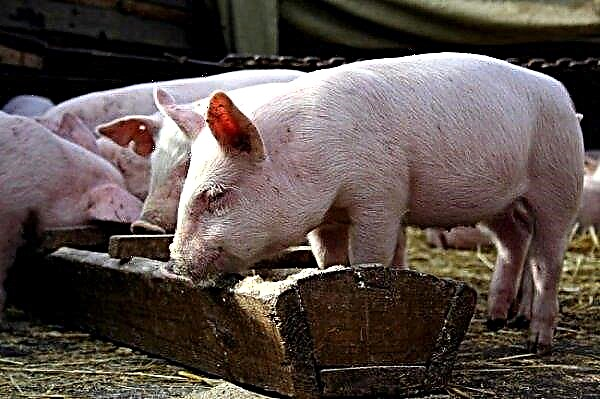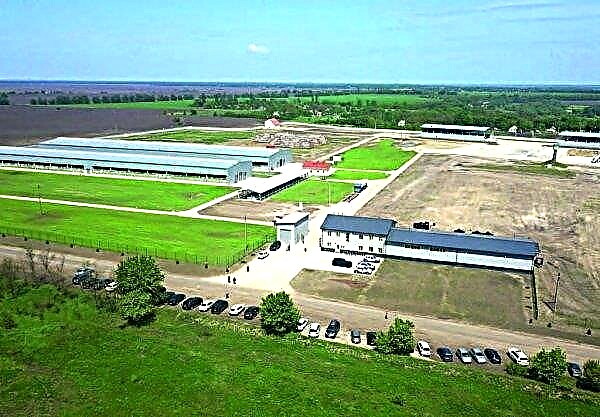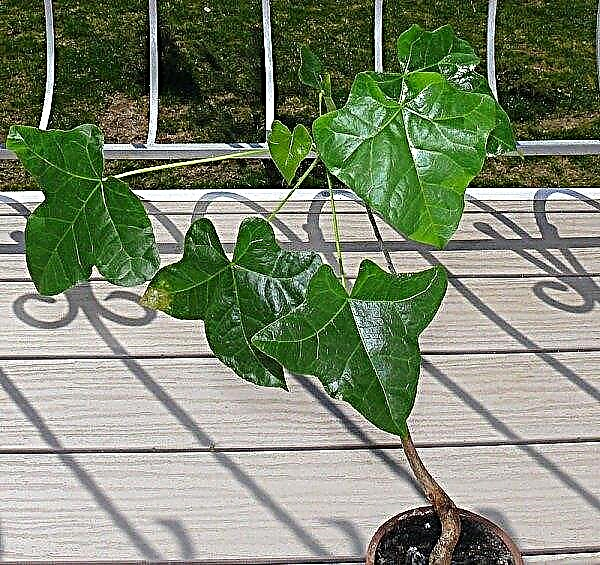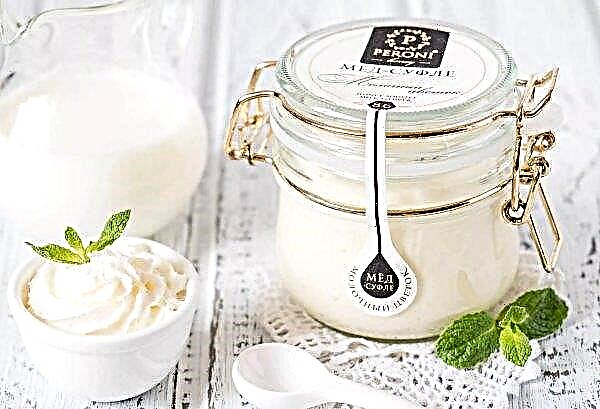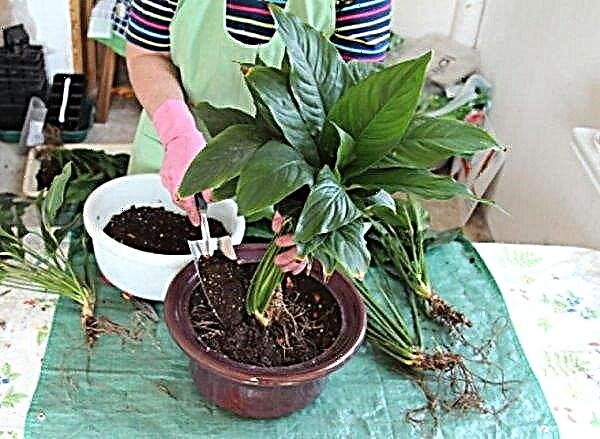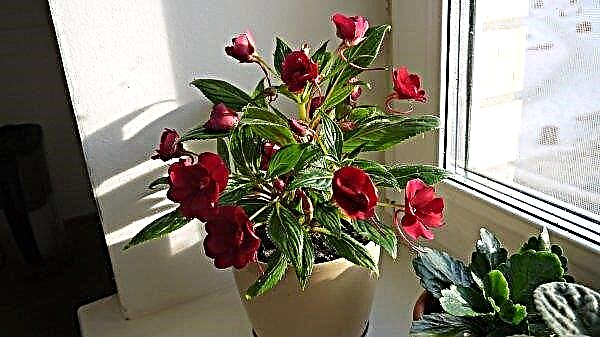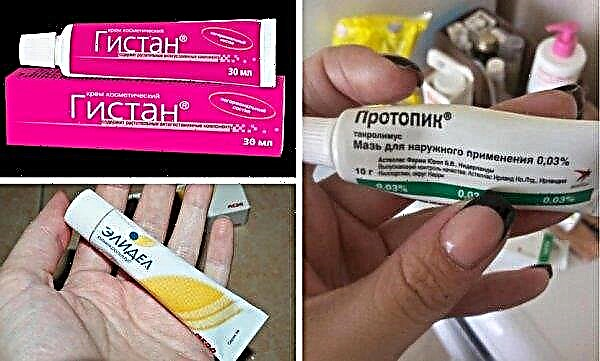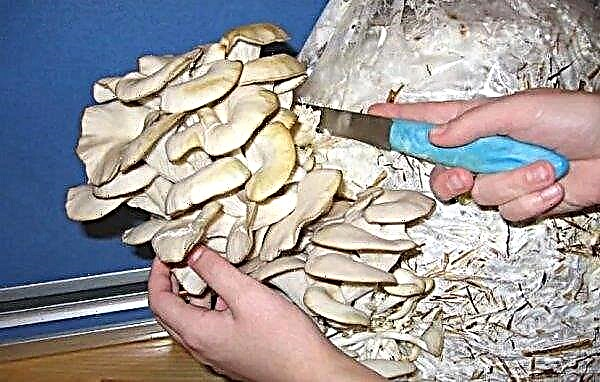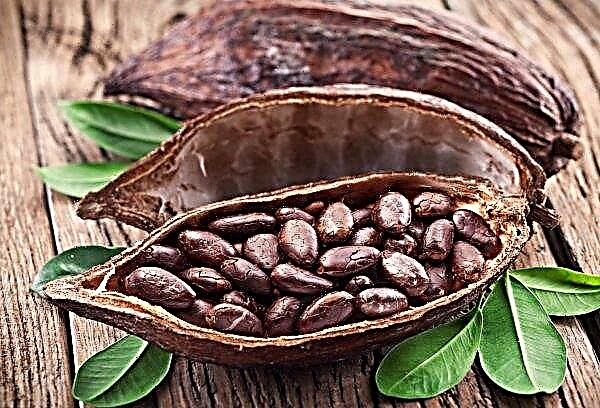Panicled hydrangea love to decorate garden and summer cottages. And despite the fact that this plant cannot be called unpretentious, many gardeners are ready to put up with its “whims” in order to admire the beauty during flowering. With tips on how to grow one of the most interesting varieties of panicle hydrangea called Candelait, as well as its description and photo, the article will introduce you.
Description and appearance of the candelaite variety
Hydrangea Candelait (Hydrangea paniculata Candlelight) bred by Dutch breeders. The stamp of the deciduous shrub reaches a height of 1–1.2 m. The crown is dense, compact, grows up to 2 m. The shoots are strong, painted in a dark burgundy color. Leaves adorn small teeth along the edges. They are elliptical in shape.
During flowering in July - October, large panicle inflorescences 30–35 cm long are formed on the bush. They resemble cones in shape. Cup-shaped flowers have 4-5 petals, painted in a cream shade, which over time additionally acquires pinkish and reddish tones. The beauty of the variety described was appreciated by flower growers, and in 2013 the flower was awarded a silver medal at the world flower exhibition.
In different sources you can find different spelling of the variety, for example, Candlelight, Candle Light, Candy Light, Candlelight. In translation, the name means "light of a burning candle", which indicates the originality of inflorescences. In the design of the garden, the described plant is used in single and group plantings to create hedges and original mixborders.
Did you know? The name of hydrangea is composed using two words from the Greek language, translated as “water” and “vessel”. Linguists suggest that such a name was given to the plant because of the external similarity of the seed boxes with jugs or because of his great love of moisture.
Landing
The lush and prolonged flowering of Candelait hydrangea, as well as successful growth and development, can be achieved if it is planted correctly. It is very important to allocate a place on the site, in accordance with the preferences of the capricious shrub in the light. In addition, the landing site should be prepared in accordance with the recommendations. Before placing a seedling in the ground, you must familiarize yourself with how to do it correctly and follow the recommendations.
Place for growth
For the cultivation of representatives of the Candelaite variety, it is required to allocate a site well lit and heated by the sun. At the same time, it should be covered from all sides, as gusts of wind can damage the inflorescences and lead to a loss of decorativeness.

This plant is allowed to plant in partial shade. It’s worse to grow and bloom at the same time. Before planting, it is important to find out about the level of groundwater occurrence in the site. Despite the fact that hydrangea is hydrophilic, moisture congestion is harmful to it and can be fatal. If groundwater comes close, then you need to arrange good drainage in advance.
Soil preparation
If planting is planned for spring, then it is necessary to prepare the soil in the fall. It must be well cleaned of plant debris and dig on a bayonet shovel. This will prevent harmful microorganisms and pests from surviving the winter. Hydrangea grows best in loams that have a slightly acidic or acidic pH reaction (within 5.5). The soil must be permeable. In it you need to add peat, sawdust, rotted straw.
Important! When planted in soil with a neutral pH, hydrangea greatly slows down growth, and the flowers lose their brightness.
The soil mixture for filling the pit should also be prepared in advance. It is made by mixing peat, humus and sand in equal proportions. It is also good to add needles to the mixture. When spring planting, it is advisable to prepare the pit in the fall. In autumn - they dig it out 2-3 weeks before the seedling is placed in the ground. The hole needs to be made 2-3 times more than an earthen lump of seedling.

Departure Dates
Hydrangea is recommended to be planted in 2 periods. The first favorable period is in the spring, when warm weather is established and the soil warms up. Usually suitable landing conditions are observed in April - May. The exact timing will depend on the climatic conditions in the region. The second period in which hydrangea can be planted is autumn. This is best done in September - October.
Landing process
For planting hydrangea in the ground does not require special knowledge and skills. You should familiarize yourself with the landing algorithm and stick to it at every stage.
Important! When planting panicled hydrangea in the soil, it should be controlled so that the root neck is located at the level of the soil surface.
A step-by-step instruction for planting a seedling is as follows:
- On the eve, water the pit abundantly, spending 2-3 buckets of water.
- Cover the bottom with a drainage layer of coarse sand or expanded clay.
- Lay out a low layer of the nutrient mixture on top.
- In the center of the pit, put and straighten the roots of the seedling.
- Fill the hole with soil.
- Pour using 10 l of water.
- Mulch the near-trunk zone.

Care
When growing hydrangeas, you should be prepared to pay a lot of attention to caring for it. Without this, to grow a beautiful plant will not work. Mandatory procedures that should be carried out are:
- moisturizing;
- top dressing;
- trimming
- shelter for the winter.
Important activities are also cultivating, weeding and mulching.
Watering and feeding
Hydrangea is very fond of moisture, so it will have to be watered at least twice a week. In hot and dry summers, you need to moisten the plant even more often. It is recommended to spend 15–20 l of moisture per bush. Water must first be defended or filtered. Watering with hard water negatively affects the appearance of the plant. During irrigation, it is worthwhile to ensure that the drops do not fall on the ground organs. When they get ugly spots form that spoil the beauty of the decorative culture.

Since acidity is washed out over time, the soil must be acidified by irrigation with acidic solutions and top dressing. You can water the soil in the near-stem zone with water with the addition of citric, succinic acid, vinegar. It is necessary to feed with urea, iron sulfate, nitrate. You can notice a drop in acidity by changing the appearance of the flowers. Their leaves will brighten, and the inflorescences will be painted in dull colors. Lush and prolonged flowering can be achieved with regular dressing.
Important! Fertilizers must be applied exclusively to moistened soil. Top dressing, introduced into dry soil, leads to a burn of the roots.
Panicled hydrangea is advised to feed 4 times per season:
- in early spring - with aqueous solutions of mullein, manure, chicken droppings;
- in the budding phase, with a mixture of potassium sulfate (35 g) with superphosphate (35 g), urea (25 g), water (10 l);
- in July - complex mineral mixtures;
- in the fall - phosphorus and potassium fertilizers.

Soil loosening
Twice or thrice during the growing season, it is necessary to carry out loosening of the soil in the near-stem zone. This is necessary to avoid the formation of a solid film on the soil surface, which prevents the entry of moisture and oxygen to the roots. Loosening should be done shallow so as not to damage the root system. This procedure should be combined with weeding. Since weeds are carriers of infection in the area, they must be timely removed with the root.
Pruning
Pruning of Candelight shrubs is carried out for three purposes: formative, sanitary, anti-aging. The bush is formed with the help of 5-10 strong shoots, which shorten up to 3-5 kidneys. This pruning is carried out before sap flow.
During the early spring sanitary haircut, all sick, frozen, damaged, growing deep into the crown branches are cut out. In addition, last year’s branches are subject to pruning. Young - shorten up to 2-3 kidneys. Slices of the sections are smeared with copper sulfate and garden varieties or with RanNet paste. To rejuvenate the plant, the shoots of old bushes are shortened to 6-7 cm from the surface of the earth.

Proper wintering
The Candelait variety is one of the most winter-hardy hydrangeas in the genus. He tolerates winter well. In case of frostbite, it quickly recovers. In order for the flower to winter successfully, you should take care of its preparation. Young plants require mandatory shelter. Their crowns are wrapped in burlap, agrofibre, spruce branches.
In the near-trunk zone, mulch of peat, sawdust, needles, fallen leaves is laid in a high layer. In temperate regions, adult Candelight hydrangea can winter without shelter. It will only be necessary to mulch it.

Breeding
Hydrangea can be propagated in three ways: using seeds, cuttings and layering. The seed method at home is rarely used. It is very long and laborious.

In order to propagate the Kandelayt variety by cuttings, it is necessary during the spring pruning to select strong shoots and cut a part 15 cm long from them. For rooting, the cut area must be placed in a nutritious light soil mixture, covered with a glass or plastic container and put in a well-lit place. Every day, the handle needs to be ventilated and the soil condition monitored. If the top layer dries, it should be moistened. After rooting, the stalk requires growing for a year. After it is fully strengthened, it needs to be planted in open ground.

For propagation by layering, you should choose a strong healthy shoot from the lower tier. On it, you need to make 1-2 cuts, and then tilt it to the ground, attach and fix it. Next year, in the spring, a young plant that has already taken root in the incision sites should be carefully separated from the mother bush and transplanted to a permanent place.
Diseases and Pests
If during cultivation of hydrangea to make mistakes during planting or care, the plant can be affected by diseases and pests. It is important to pay attention to the problem in time and begin treatment. The correct diagnosis can be made based on characteristic symptoms. The information given in the table will help in this:
| Disease name | Symptoms of lesion | Treatment methods |
| Chlorosis |
|
|
| Dry blackened leaves |
|
|
| Wet leaf blackening | leaves softened, lost their shape |
|
| Gray rot | gray plaque on the leaves |
|
| Powdery mildew |
|
|
| Peronosporosis (downy mildew) | the formation of oily spots on foliage and stems |
|
| Septoria |
| Spraying "Rodomil Gold", "Pofit Gold". |
| Rust |
|
|
You can find out that the flower was attacked by pests by the changes in its appearance. If there are prerequisites for infection, it is better to resort to preventive measures.

The methods of treatment of the main harmful insects that infect hydrangea can be found in the table:
| Pest name | Symptoms of lesionki | Treatment methods |
| Leaf aphid | yellowing, drying out of the leaves |
|
| Spider mite |
| The use of "Actofit", "Akarina." |
| Gall nematode | the formation of galls of red color on the roots and lower part of the stem |
|
| Slug | damaged leaves and shoots |
|
| Leaf beetle |
|
|

In order to prevent disease and pests in the garden, it is necessary to carry out prevention. The main preventive measures to significantly reduce the risk of infection include:
- Harvesting plant debris before winter.
- Deep digging of a site in the fall.
- Planting healthy seedlings.
- The correct watering regime.
- Strengthening immunity through mineral nutrition.
- Regular soil care.
- Timely weeding.
- Pruning with sanitized garden tools.
Did you know? Hydrangea came to Europe from Asia at the beginning of the 14th century. In those days, this decorative culture was valued very expensively, and only wealthy citizens could grow it.
So, despite the fact that hydrangea is considered a moody plant, growing it in a garden or in a summer cottage is not too difficult. You can get a regular and plentiful flowering from this culture if you plant it in a good place and provide it with the required care. If you devote enough time to the Candelaite variety, it will decorate the site until mid-autumn.

